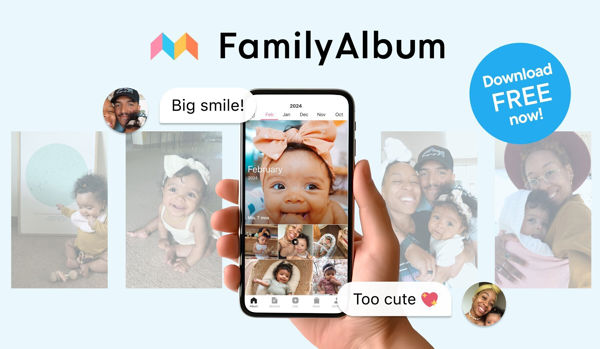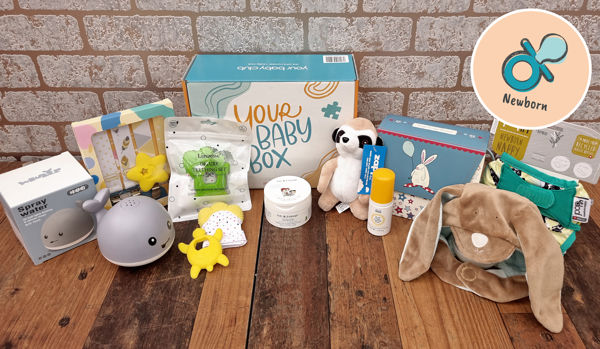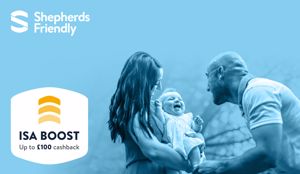When your baby starts getting towards five to six months old, a lot of your conversations will centre around weaning. You'll receive no end of advice from friends and family about when to start and what foods to start with.
Bear in mind though that the official guidance and recommendations have changed since you were a baby yourself.
The World Health Organisation recommends that parents wait until babies are six months before starting weaning. This allows the child's digestive system and kidneys to have developed enough to cope with solid foods.
This is alongside the UK’s Department of Health recommendations that babies should be breastfed exclusively for the first six months of their life.
In some cases, children with specific medical conditions may be advised to start weaning early from 17 weeks. A study by the University of Southampton concluded that babies weaned before 17 weeks were more likely to develop food allergies than those weaned after this point.
Early weaning is not advised for babies that are classed as 'hungry', especially if milk intake is reduced at the same time. Babies still need a recommended 500ml of milk from six to twelve months.
Is my baby ready?
There are a number of signs to look for to see whether your baby is ready for weaning. These apply irrespective of which approach you are going to take, or haven’t made your mind up yet.
[Read more: When to Start Weaning]
The first ones are related to physical development. Your baby should be able to lift and hold their head up independently, and it doesn’t slouch forward after only a few minutes. They should also be able to focus on and attempt to pick up a piece of food or a spoon and bring it towards their mouth. They will miss on occasions, but this motion is great for encouraging their understanding of feeding.
The final physical sign is whether your baby can chew and swallow foods. This is obviously a tricky one to test out before you have actually started weaning, so keep an eye on what happens when they bring a toy or spoon to their mouth.
If they are showing signs of a chewing motion in their mouth, they should be ready for weaning. Your child can start weaning even if their first teeth have not appeared yet, as their gums are hard enough to ‘mash’ soft foods to a consistency that can be swallowed.
The last thing to look for is probably what you will notice first. Your child will start staring longingly at the food on your plate and at you when you are eating. They may also try to grab out for foods, so you will need to take extra care with what is in reach!
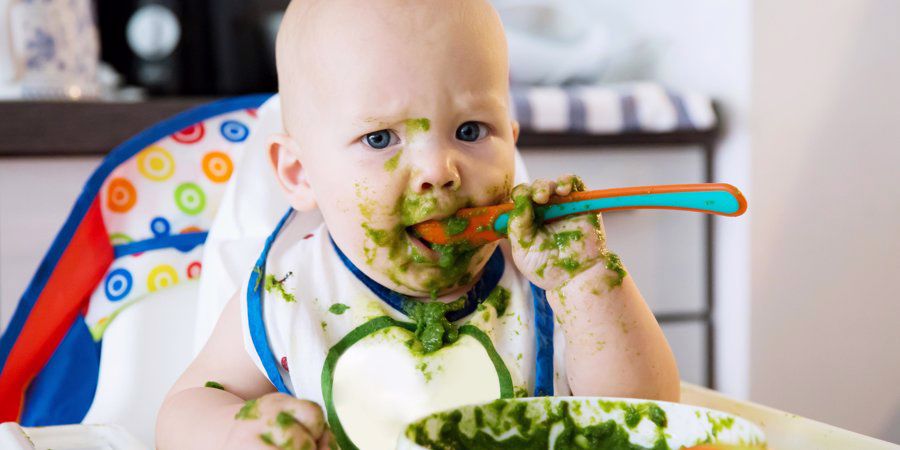
How should I wean my baby?
There are two approaches to weaning that you can use or a combination of the two. Every baby is different and what works for one child won't necessarily be the right approach for another, even between siblings. It will become a hot topic of conversation but try not to compare your baby's progress or likes and dislikes to others.
[Read more: When Will I Wean My Breastfed Baby?]
Traditional Weaning
Traditional or spoon-fed weaning has been used by parents for hundreds of years. The principle behind it is that you start with feeding your baby basic tastes and smooth textures, and then build up to incorporate all food types. You are responsible for feeding your baby, with a spoon or fork.
An example weaning plan
- Baby rice mixed with water, formula or breast milk
- Porridge or baby cereal mixed with water, formula or breast milk
- Fruit or vegetable purees, such as apple, carrot, pear, sweet potato
- Pureed meals such as shepherd’s pie or spaghetti bolognese
- Yoghurts
Lumpy textures, this can be the same tastes that they are already used to but building up the ‘lumpiness’
Baby-led Weaning
Baby-led weaning is in contrast to the spoon-fed approach in that the baby has control over how they eat. The principle is that you give your baby finger foods to eat, and they feed themselves. You may also give your child some food in a bowl and they use the spoon (Eg porridge or yoghurt)
An example of soft foods to start with;
- Cooked vegetable sticks
- Toast fingers
- Omelette strips
- Crunchy sticks
- Rice cakes
- Mini breadsticks
- Cut up fruit fingers, such as melon, banana or mango
- Pasta
It is advised that meat is not the first food that your baby tries; get them used to fruit and vegetables first. When you do introduce it, start with thigh or leg meat rather than breast as breast meat tends to be drier. Mince is easier to digest than steaks or chops, so introduce that first. Fish is another great protein to start with.
[Read more: Food Allergies in Babies and Young Children]
Safety
Many parents are anxious about weaning because they are worried that their baby will choke on foods. However, the risks of choking are low if you take some simple steps at each meal.
-
Keep an eye on the size of pieces of food or spoonfuls that your baby can comfortably fit in their mouth.
-
Don’t be afraid to step in if they do put too much in their mouth, it’s a good lesson in portion control.
-
During the first few stages of weaning, stay with your baby at all times when they are eating especially if you are taking the baby-led approach.
-
Make sure you cut up items such as grapes and cherry tomatoes which could get stuck in your baby’s throat.
There is a risk of botulism from honey, so do not give that to your baby until they are over twelve months. You should also steer clear of shark, swordfish and marlin.
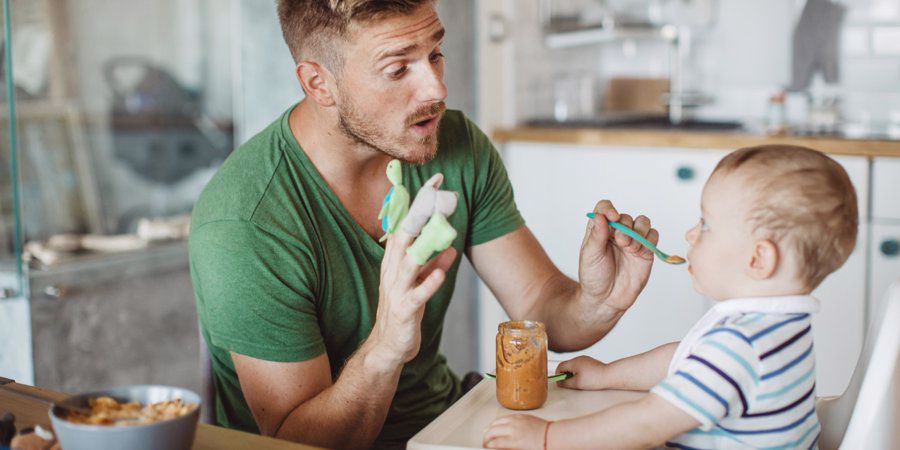
What will I need to buy?
There are a few items that you may not already have which you will need to purchase for weaning.
Highchair
You will need some form of a seat for your baby to sit in whilst feeding, with most parents choosing a traditional highchair. There are many options to choose from including booster seats and seats which attach to your table. Whichever one you do choose, make sure that there is enough room for your baby to wriggle around but that they won’t slip down in. Your child needs to be sitting straight upright to allow their food to move through their digestive system properly. In the early stages, you could use extra padding to keep your baby in position but make sure this is not restrictive.
Cover-Ups
If you are concerned about your baby getting their clothes messy, you may want to invest in some different bibs or protective clothing. The normal cloth bibs will absorb foods and liquids very quickly which can be difficult to fully clean off, nothing stains more than sweet potato puree! Other options you could look at are plastic bibs or ‘coveralls’ or you could use some old t-shirts or shirts cut to size. Make sure that whatever you buy is either wipe clean or you can throw it in the washing machine (or the bin!)
Spoons
You don’t necessarily need to buy extra feeding bowls or plates, as long as you don’t mind your crockery being thrown on the floor. Look out for ‘picnic’ ranges of plastic items, as these tend to be cheaper than specific baby items. You will need to buy some soft spoons though, to avoid scratching your baby’s mouth. These tend to have long handles for easy grabbing.
Cleaning Products
Weaning is messy, there is no avoiding that fact. Even if you are doing baby-led weaning and no purees, you will still need a dustpan and brush and something to clean off the yoghurt flicks! If you have carpet, try to find something you can put under the highchair to absorb spills. It will need to be a good distance wider than the highchair too. Old newspapers spread out would work fine.
You may want to buy some ‘easy’ cleaning products such as wipes or a spray mop. Although standard baby wipes are great for a quick wipe over, it is advisable to give the highchair and other surfaces a good clean at least once a week. When things do get messy, try not to ‘hover’ with a cloth or wipe, especially around your child as this can give them the wrong message about eating. Their eating habits will improve and the level of mess will reduce quickly.
A healthy approach
However you decide to wean your baby, whether that’s following a traditional or baby-led approach, make sure it’s right for your baby and your family as a whole. The most important thing is not how many different foods your baby likes, but promoting a positive relationship with food and eating. There will be many more ‘phases’ of eating for your child, possibly including a ‘fussy’ phase just when you think you’ve got it nailed. If you can demonstrate that food is there to be enjoyed and nourishes their body, they will grow into adulthood with the right attitude.


